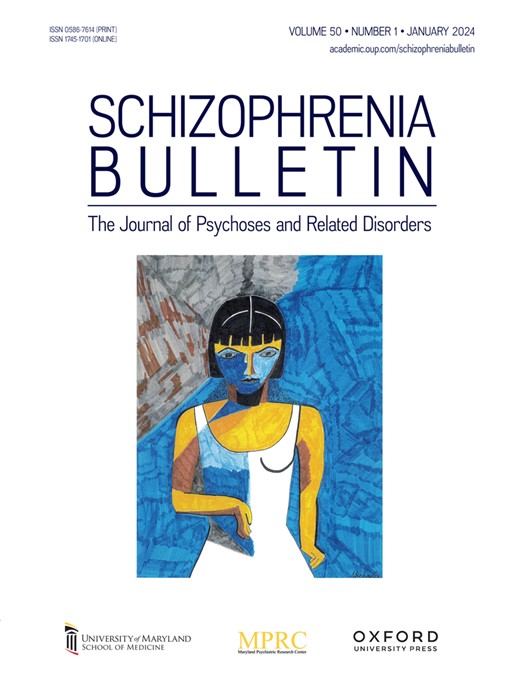5 THE TREATMENT OF SCHIZOPHRENIA WITH THE ADDITION OF ATYPICAL ANTIPSYCHOTIC MEDICATION TO TRAVEL THERAPY
IF 5.3
1区 医学
Q1 PSYCHIATRY
引用次数: 0
Abstract
Background Through multi-sensory interaction, tourism healing can generate positive emotions, broaden cognitive ability, and improve social relations, thus promoting healthy behaviors. In recent years, olanzapine and risperidone, as atypical antipsychotic drugs, have been proved to have better efficacy and lower incidence of adverse reactions in the treatment of schizophrenia. And they have a significant improvement in patients’ clinical symptoms and cognitive function. Tourism therapy can be used as a multi-dimensional treatment, which may have a synergistic effect when combined with drug therapy. Therefore, the study carried out the treatment on the basis of the above atypical antipsychotic medication combined with tourism therapy. Methods Sixty schizophrenic patients admitted to Guihang Sang03 Hospital of AVIC from January 2022 to March 2023 were selected as the observation group, and healthy volunteers with similar general data were selected as the control group. The observation group was divided into long DUP subgroup and short DUP subgroup according to the duration of untreated psychosis (DUP). The control group was treated with the atypical antipsychotic drug risperidone: the initial dose of treatment was 1mg twice daily. During the first 7 days of treatment, the drug dose is gradually increased to 3mg/ day twice daily. After 14 days, the drug dose should be increased according to the development of the patient’s disease, but it should be controlled in the range of 4 to 6mg/ day. The entire treatment cycle lasted 56 days. The observation group was given tourism therapy on the basis of the control group: the patients were allowed to choose a destination suitable for their relaxation and participate in some activities that can relax the body and mind, such as yoga, mountaineering, etc. Make new friends while traveling and share your experiences and feelings with each other. The serum Homocysteine (Hcy) level was observed before and after 2 months of treatment. Results Before treatment, the Hcy level in observation group was 26.29±7.03μmol/L, which was significantly higher than that in control group (114.23±2.87μmol/L) (P < 0.05). The average level of Hcy in the long DUP subgroup was 29.02±7.07μmol/L, which was also significantly higher than that in the short DUP subgroup (24.12±6.34μmol/L), and the differences were statistically significant (P < 0.05). After treatment, the mean Hcy level in the long DUP subgroup was reduced to 14.74±2.81μmol/L, and that in the short DUP subgroup was reduced to 12.88±1.68μmol/L, and the Hcy level in both groups was significantly decreased (P < 0.05). However, even after treatment, the mean Hcy level in the long DUP subgroup was still higher than that in the short DUP subgroup, and the difference was still statistically significant (P < 0.05). Discussion This study compared the difference of serum Hcy level and cognitive function between schizophrenic patients and normal controls. The results showed that compared with normal people, the serum Hcy level was higher in patients with schizophrenia, and the cognitive function was more impaired. After 2 months of standardized treatment with atypical antipsychotic drug therapy, serum Hcy level of patients was significantly decreased compared with atypical antipsychotic drug therapy alone (P < 0.05). However, the study did not evaluate the relationship between improvement in schizophrenia symptoms and improvement in cognitive function after treatment. Future research could be done by enabling the use of positive and negative symptom scales to assess symptom improvement in schizophrenia.求助全文
约1分钟内获得全文
求助全文
来源期刊

Schizophrenia Bulletin
医学-精神病学
CiteScore
11.40
自引率
6.10%
发文量
163
审稿时长
4-8 weeks
期刊介绍:
Schizophrenia Bulletin seeks to review recent developments and empirically based hypotheses regarding the etiology and treatment of schizophrenia. We view the field as broad and deep, and will publish new knowledge ranging from the molecular basis to social and cultural factors. We will give new emphasis to translational reports which simultaneously highlight basic neurobiological mechanisms and clinical manifestations. Some of the Bulletin content is invited as special features or manuscripts organized as a theme by special guest editors. Most pages of the Bulletin are devoted to unsolicited manuscripts of high quality that report original data or where we can provide a special venue for a major study or workshop report. Supplement issues are sometimes provided for manuscripts reporting from a recent conference.
 求助内容:
求助内容: 应助结果提醒方式:
应助结果提醒方式:


